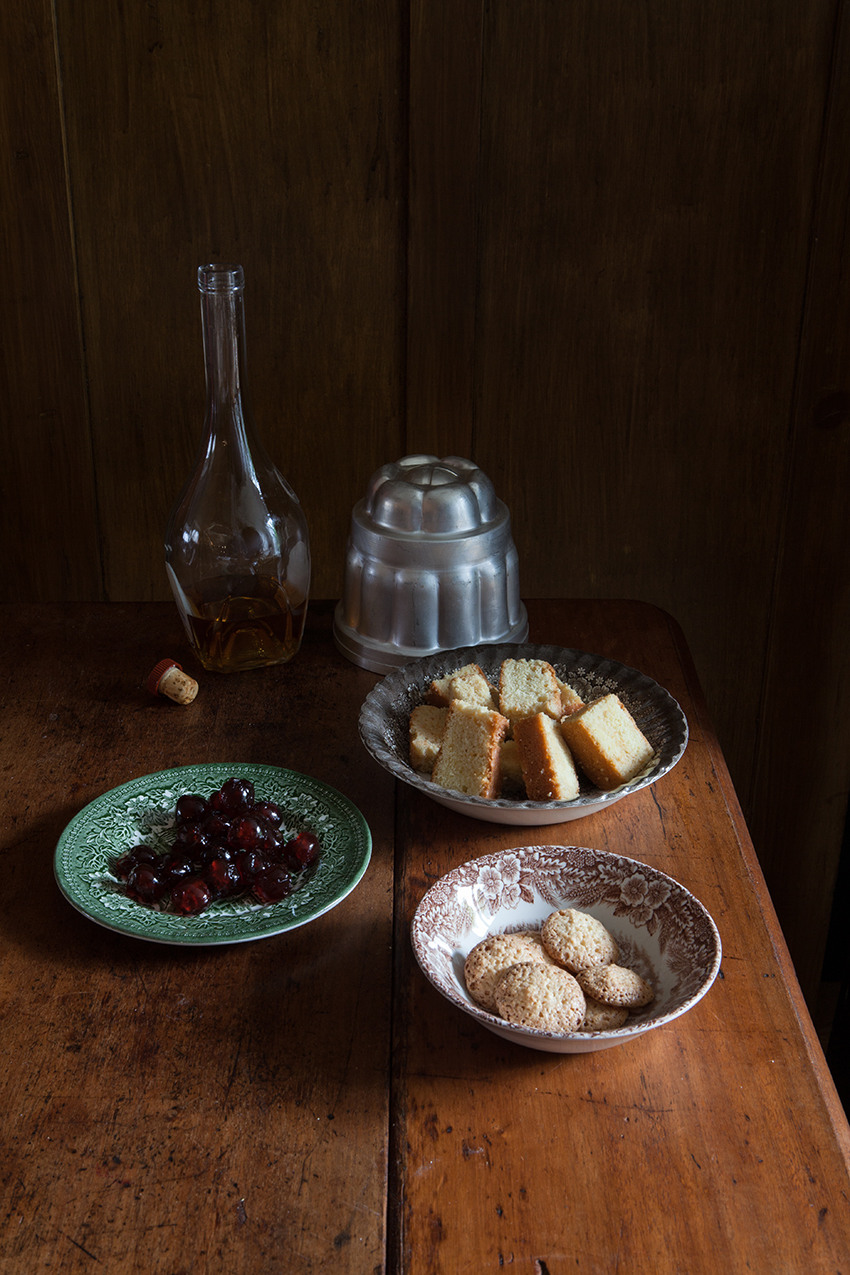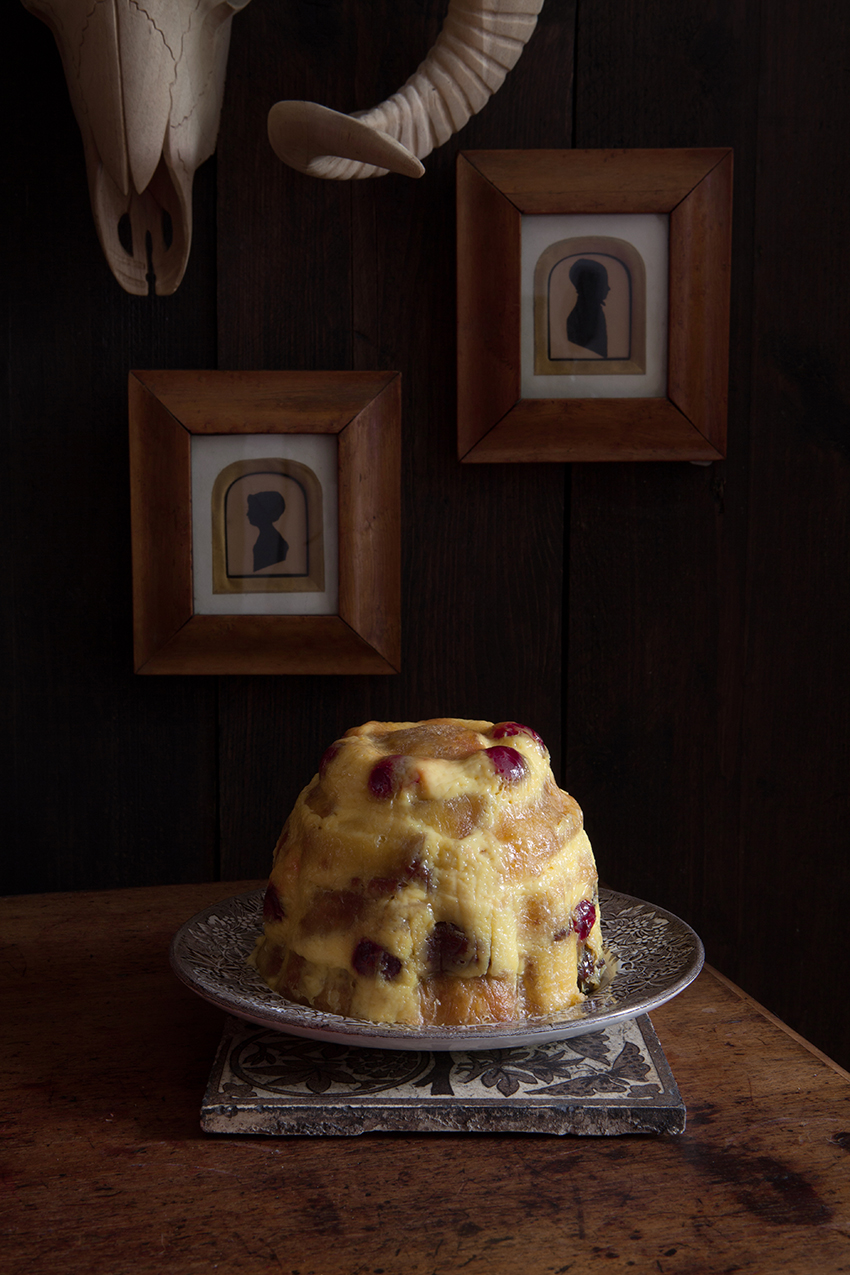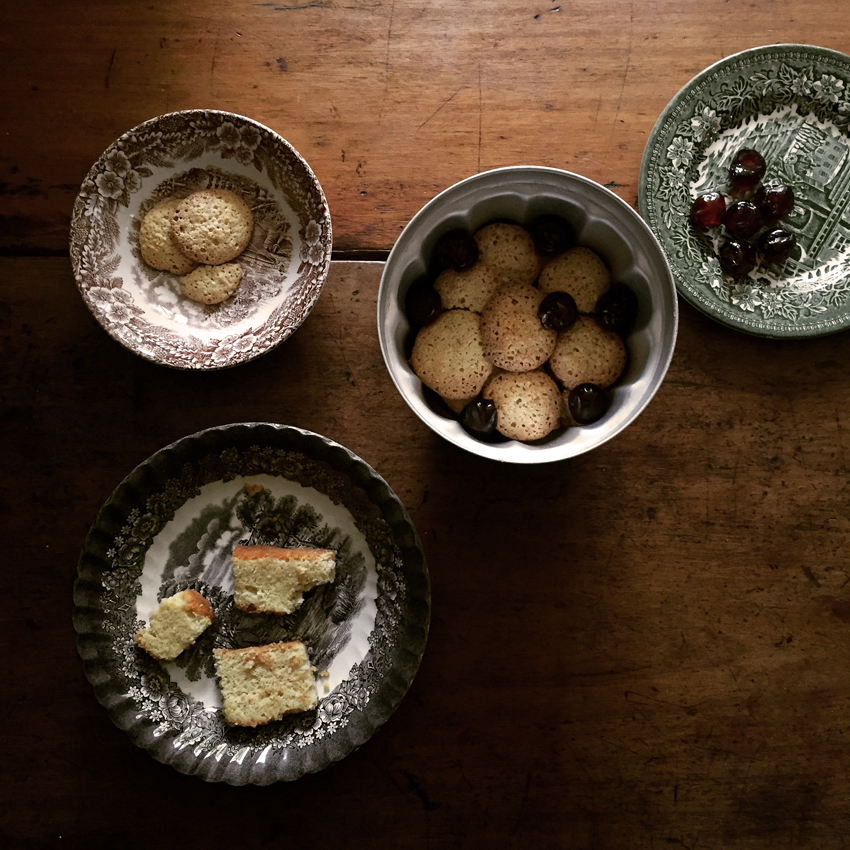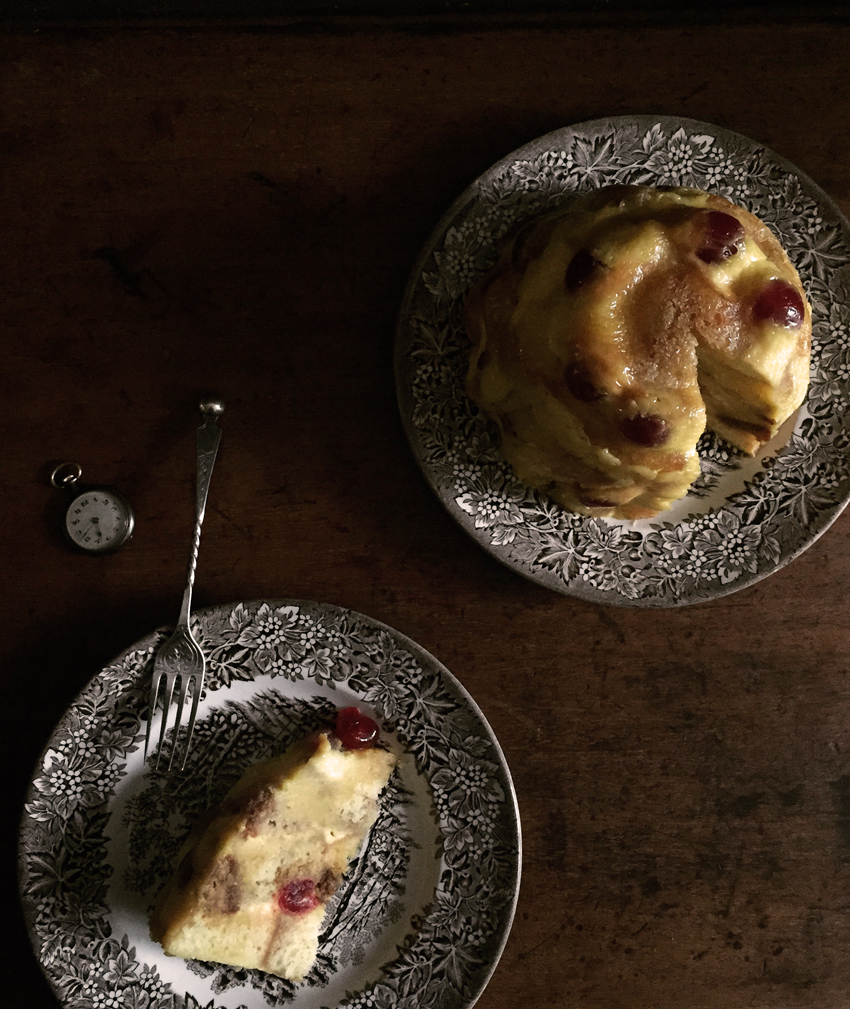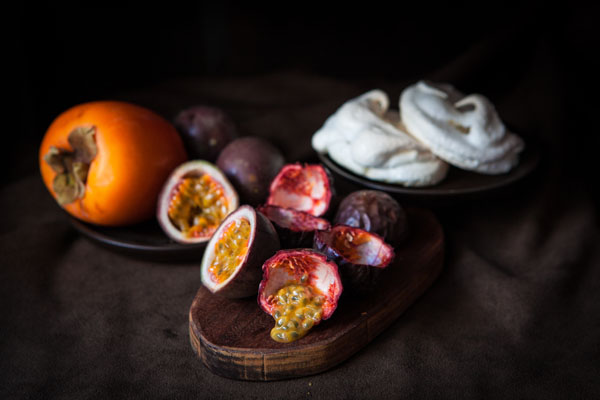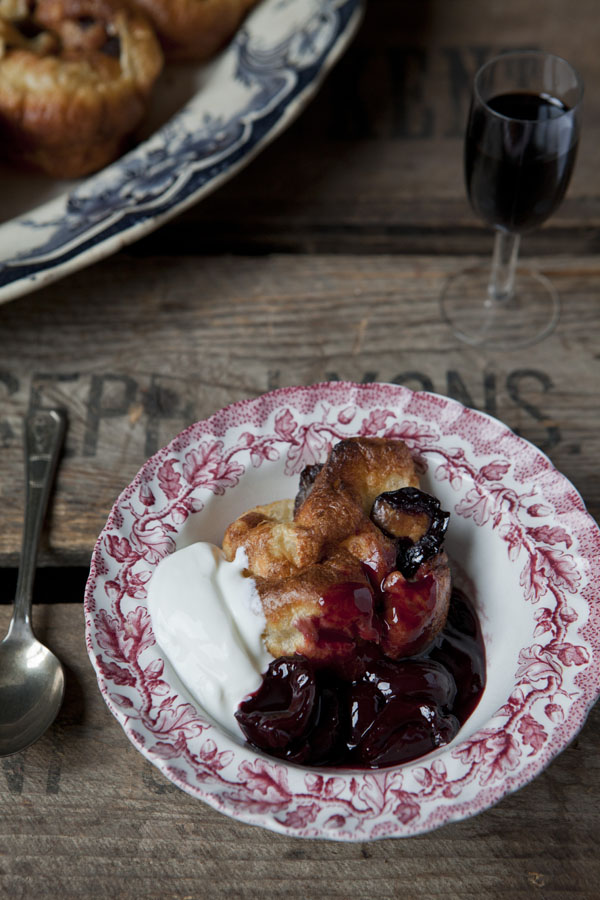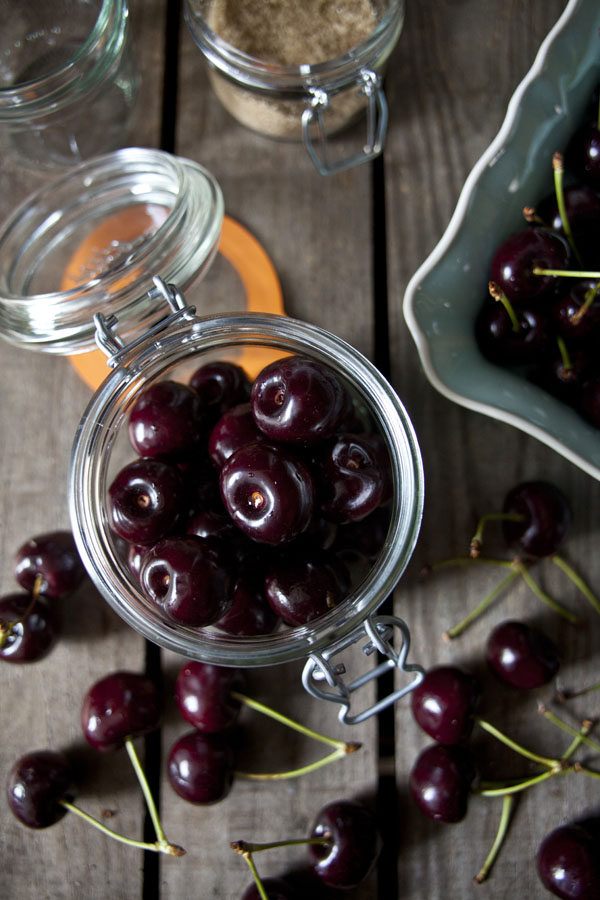The post Cabinet Pudding – Or what to do with stale cake and booze appeared first on Miss Foodwise.
]]>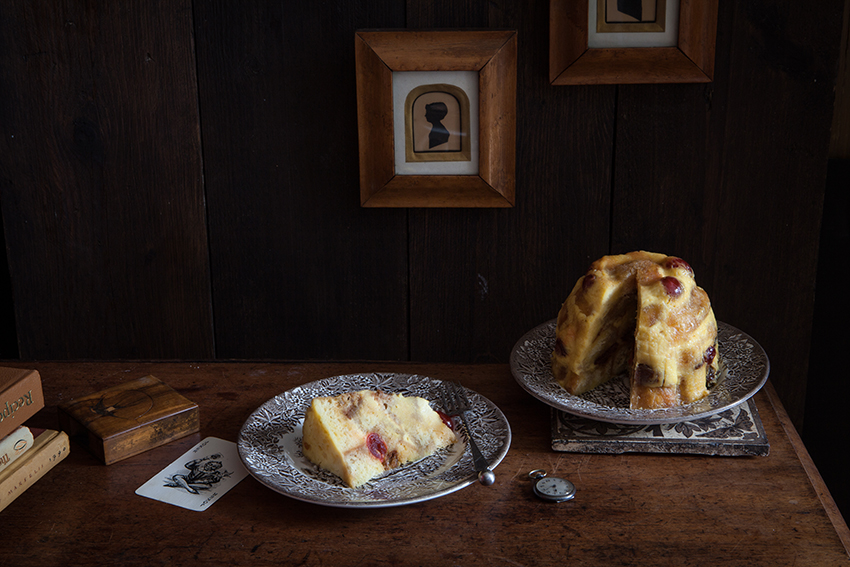
Let me share with you a recipe from Pride and Pudding, my debut book that was festively launched in London’s Borough Market two weeks ago. There is also good news if you haven’t ordered the book yet! The Amazon editorial team has not only included Pride and Pudding in their ‘Books of the Month’ – this week it is also part of their ‘Deal of the Week’ which comes with a 50% discount only this week. (Get it here >) Meaning it will only set you back a tenner! It looks like sales are going splendid as I haven’t seemed to have lost my spot in the first 10 of the top 100 Bestsellers. As an author you do fear no one will buy your book. As do you fear bad reviews and negativity. So if you have a moment and you like the book, Amazon reviews do make a difference.
Now back to the actual order of the day. Cabinet pudding was a favourite on Victorian tables, the first recipes for it appeared in the early 19th century, though similar puddings had been made long before then. It is also sometimes called Newcastle pudding, diplomat pudding or Chancellor’s pudding, though the connection with politics isn’t clear. Recipes also vary. There are theories about the name but none seemed to hold much truth to them.
Most recipes are tipsy puddings – much like a trifle – with pieces of sponge cake or sometimes even plain buttered bread or biscuits soaked in alcohol layered with dried fruits and custard. These are placed in a fancy mould and the pudding is then steamed.
This makes for a very satisfying pudding, I must admit I’m game for any pudding containing decent booze. There’s just something about a alcohol soaked cake, especially when not overly sweet and softly steamed like this one. It is so moist, it really doesn’t need anything else, and it is better on the next day. The best result however is obtained when using a home made sponge cake, or one that you have purchased from an artisan bakery. This because the cake should not disintegrate, but hold all that alcoholic liquid remaining quite in shape. But also because you can keep an eye on the sweetness, flavourings and other ingredients which are often added to keep the cake from going mouldy while it should actually just go stale.
I like to search out good candied cherries for this pud, as it is a pudding I will not make on a plain old tuesday, I like to go the extra mile and make it as best as it could be. Don’t use those marashino cherries in a jar, just dry candied but still looking plump and juicy.
When it comes to the ratafia biscuits needed, decent amaretti biscuits will do just fine. Or if you have stale ratafia’s left over from another time, then of course those will work splendidly.
Makes 1 pudding in a 1 litre (35 fl oz/4 cup) fancy mould
- 190 g (6. oz) stale sponge cake (or us the recipe in my book)
- 10–15 ratafia biscuits or amaretti biscuits (or us the ratafia biscuits recipe in my book)
- cognac or dark rum, to taste
- custard sauce 1/2 recipe see below
- (see page 338)
- 10–15 glaceed cherries
For the Custard (you need half of this, but you can use it to serve with it too. But I feel it really is best without)
- 10 egg yolks
- 500 ml (17 fl oz/2 cups) milk
- 500 ml (17 fl oz/2 cups) thick (double) cream
- 50 g (1. oz) raw sugar
- 1 mace blade or cinnamon stick
- 1 bay leaf (optional)
Method
Preheat the oven to 180C (350F).
Slice the sponge cake in 1 cm (3/8 inch) thick pieces and arrange in a deep dish with the biscuits. Drizzle with a generous amount of cognac or rum and let it soak.
Lightly grease the mould (if you don’t want to take any risks getting the pudding out later, line it with plastic wrap – the sort that doesn’t melt in the oven – sticking it to the butter).
Make the custard and let it cool slightly while you fill the mould.
Whisk the egg yolks in a large bowl. Bring the milk, cream, sugar, spice and bay leaf, if using, to a simmer in a saucepan. Strain the hot milk mixture and discard the flavourings. Pour a little of the hot mixture into the egg yolks and whisk thoroughly. Now continue to add the hot milk mixture in batches until fully incorporated and you get a smooth sauce. Pour the mixture back into the saucepan and cook over low heat, stirring constantly with a spatula until just thickened, making sure the eggs don’t scramble.
When just thickened, remove from the heat and pour into a cold bowl. If you don’t want the custard to develop a skin, cover the bowl with plastic wrap.
Place a few cherries in the base of the mould, then add a layer of sponge cake and one of biscuits, then add a few more cherries and another layer of sponge and biscuits. Repeat until the mould is three-quarters full.
Pour in the lukewarm custard then place the mould on top of a trivet or inverted saucer in a deep ovenproof pot that can completely cover the mould. Fill the pot with boiling water halfway up the sides of the mould, place a saucer on top of the mould and put the lid on the pot.
Carefully put the pot in your oven. Leave to steam for 1 hour, then allow the pudding to cool for 5 minutes in the mould before attempting to turn it out on a plate.
Serve with Sack sauce (equal amounts of butter, sugar and sherry or madeira), custard or just on its own, as it shouldn’t be dry.
The post Cabinet Pudding – Or what to do with stale cake and booze appeared first on Miss Foodwise.
]]>The post Passion fruit, Persimmon and Pepper Pavlova – I had a love/hate relationship with merengue appeared first on Miss Foodwise.
]]>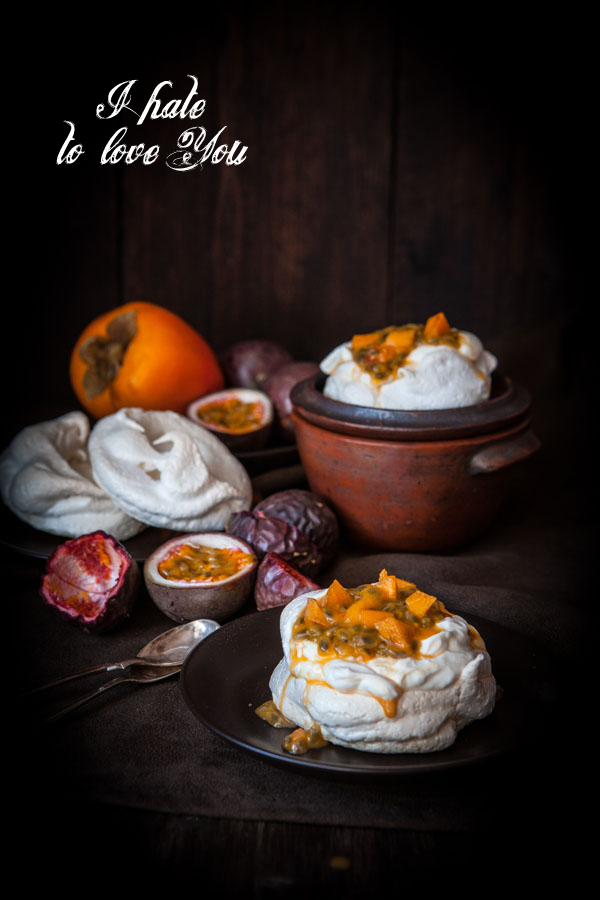
For a history geek like me it is interesting to see how the Valentine’s traditions came to be. There are a lot of theories surrounding its origins but it seems that the first time Valentine’s day was linked to love can be traced back to the 14th century.It was the English poet Geoffrey Chaucer, mostly known for The Canterbury tales who mentioned Valentine’s day in his The parlement of foules C 1381.
For this was on seynt Volantynys day Whan euery bryd comyth there to chese his make.
In modern English: For this was Saint Valentine’s day, when every bird of every kind comes to this place to choose his mate.
It is not known why the date 14 february was chosen, but of course there are a lot of assumptions. There wasn’t even one Christian Valentine, there were several martyrs with this name. It is however only since Chaucer’s mention in the Middle Ages that Valentine’s poems start popping up in history. The first ever love poem linked to Valentine’s day is believed to be by the hand of Charles Duker of Orleans who was captured in 1415 by Henry V because he was in line for the French throne. During his imprisonment he wrote a poem to his wife which links the day directly to a declaration of love. In his first few words he wrote:
Je suis desja d’amour tanné
Ma tres doulce Valentinée
Since then, there have been innumerable other Valentine’s poems and the Valentine’s business is now rather about money than it is about love.
It seems that people need a date for things, Valentine’s for lovebirds, Stir-up Sunday to prepare the Christmas pudding and Black friday to spend your hard earned money on sales. And no matter how much ‘fun’ celebrating Valentine’s day can be, we should show our love and appreciation – respect – for each other on every day of the year. Because the every day – is what counts. The little things.
My lovely Bruno made me a bun with cheese to eat in the car before a workshop a few weeks ago – that is love my friends and it says a million more words than a Valentine’s card can say.
Have a good Valentine’s everyone! I’m sending you my love!
For you on this day this Passion fruit, persimmon pavlova with a hint of pepper to spice things up!
Find my recipe on the Great British Chef’s blog here >
And read about how I have had a love/hate relationship with merengue since I was a little girl.
The post Passion fruit, Persimmon and Pepper Pavlova – I had a love/hate relationship with merengue appeared first on Miss Foodwise.
]]>The post Kentish cherry batter pudding appeared first on Miss Foodwise.
]]>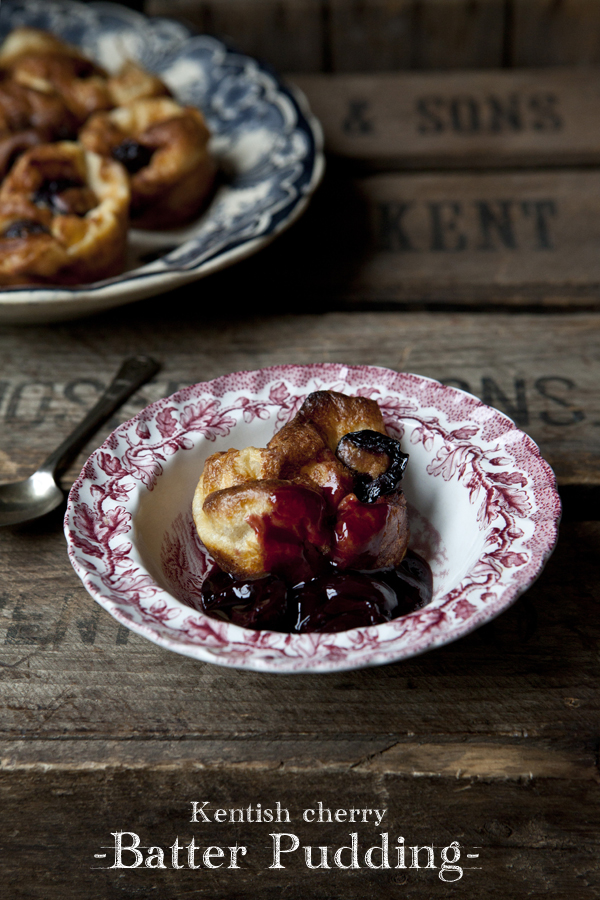
Batter puddings have been around for centuries. Originally they were named ‘dripping puddings’ because they were placed in trays underneath large spit-roasts to catch the dripping of the meat. In the 1747 book The Art of Cookery made Plain and Easy, Hannah Glasse renamed the dripping pudding to the now more generally known Yorkshire pudding.
‘Yorkies’ were provided to stretch the meat a little longer, soaked in gravy they are very child’s favourite and traditionally served as a filling dish before the main meat dish came to the table rather than accompanying it.
But batter puddings haven’t always been the perfect partner in crime to a good sunday roast, they have also been savored as a sweet treats as well. Mostly the rich puddings were just drizzled with a dusting of fine sugar but in the summer season and early autumn when there was a glut of fruit to use up, a sauce of cherries or plums would have been made to accompany the batter pudding.
Although there is no proof of age for the recipe of the Kentish cherry batter pudding, before the second world war there were about 40 000 acres of cherry orchards in Britain and most of them were situated in Kent. This does tell us that there were a lot of cherries about and not all of those cherries would have been exported to other parts of the country. Sadly only 90 percent of these orchards remain today but luckily the last few years Kentish cherries have seen a revival with new orchards being planted.
Cherry trees are kept much shorter now, making it easier to harvest. In the old days, mostly women would pick the cherries standing on high ladders with wicker baskets tied to their waists.
I reaslise this recipe comes at the very end of the cherry season, but you can also use the cherry brandy you have in your cupboard if you made some last year. Or like me if you made some every year for the past 5 years. I age them in years, only just opened up my 10 year old, after which I didn’t make any for 5 years. Some people who I like very much have received a tiny jar of those cherries so if you have, open the jar wisely.
This post also comes at the very end of the season because I have been so very busy, I already mentioned in my last my last post I’m writing a book but I’m also taking on an extra course in culinary school.
But on to the Kentish cherry batter pudding
What do you need
For the batter – makes 12 muffing size puddings
- 120 g plain or white spelt flour
- 2 large free-range eggs
- 240 ml full-fat milk
- a pinch of sea salt
- rapeseed, sunflower or lard for baking
For the cherry sauce
- 300g cherries
- 150 ml unsweetened apple juice or water
- 40 g raw cane sugar
- 2 teaspoons of cornstarch if you wish to thicken the sauce
Method
- Preheat your oven to 200° C
- To make the batter, sift the flour – very important here – and add the eggs, add the milk slowly while whisking the batter to create a mixture resembling a slightly thicker pancake batter.
- To make the cherry sauce, remove the stones from the cherries by halving them or use a fancy tool to get the stone out. Place in a small pan and bring to a simmer with the water or apple juice.
- Add the sugar and let it dissolve, simmer until you get a dark colored sauce. I like not to cook it too long so the cherries aren’t reduced to jam.
- If you like a thicker sauce add the cornstarch to packet instructions and when done put aside
- Place a generously greased muffin tin in the preheated oven.
- When the oil is hot, be quick as it should stay hot. Get the tin out of the oven safely, don’t spill the hot grease!
- Scoop batter into each muffing shape and then add a cherry or two from your braised cherries, or from your cherry brandy.
- Place into the oven and don’t touch the oven door until the batter puddings have risen and are golden brown, this should be about 25-30 minutes.
- Serve with some of the braised cherries, a spoonful of clotted cream or strained yoghurt (Greek style)
Tip: Just use leftover Yorkshire puds if you have them, and also these puds freeze well!
I’ll share with you which beer I would have with this pudding, to stay in the cherry mood: a traditional Belgian sour cherry beer, not a sweet one like the more commercial brands. A sour one which has a hint of the kernels and vanilla like a Liefmans Kriek, or a provision beer like a Liefmans Goudenband. For more international beers I think a sweet ans mooth porter would do the trick. Or, if you have cherry brandy, a little glass of cherry brandy of course!
Enjoy!
You might also like
Cherry and almond cake
Cherry brandy
The post Kentish cherry batter pudding appeared first on Miss Foodwise.
]]>